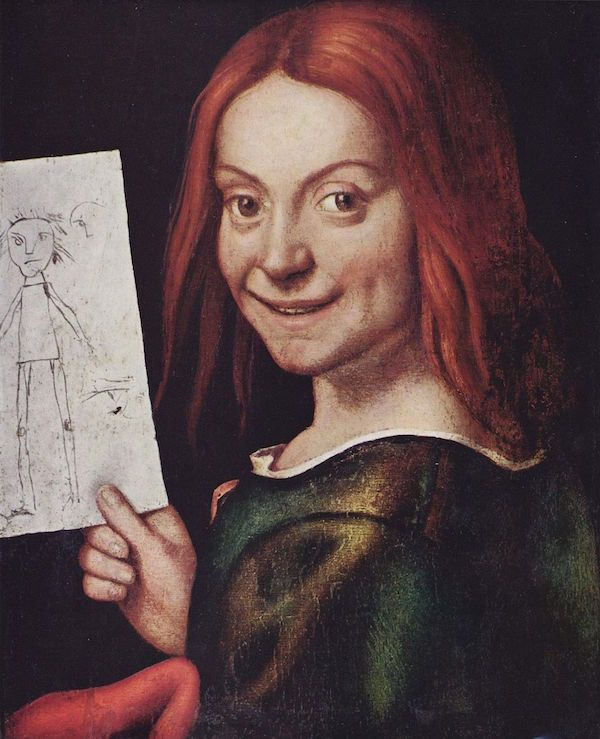
This painting by Giovanni Francesco Caroto (1480–1555/1558), Portrait of a Child With a Drawing (c. 1520), was among the paintings that were stolen from the Museo di Castelvecchio in Verona, last Thursday, 19 November. It's an amazing painting and I do hope it will be returned or recovered undamaged, along with the other stolen paintings.
The painting shows a child with a child's drawing. As such it is a variation on the painter at work theme, which always interests me, because of the questions it raises about the nature of painting, perception and subjectivity. To paint the drawing Giovanni Francesco Caroto had to imitate a children's drawing, painting or drawing in the manner of a child, the way the painters of Cobra would do some four and a half centuries later. If we assume that Giovanni Francesco Caroto painted the children's drawing himself, that is. It is, of course, possible that he asked the seven year old daughter of his next door neighbour to make to drawing in order to make it look more like a real children's drawing. Indeed, we cannot exclude the possibility that the girl (boy?) in the portrait made the drawing, which would be a great pun on the part of Giovanni Francesco Caroto. In that case the painting would have a dual authorship.
If you look closely you notice that the drawing consists of a figure, part of a face and some seemingly random scribblings. The artist may have added these pictorial elements to make the children's drawing more realistic and more easily recognizable to his intended audience as a children's drawing. But how many children were actually in a position to make drawings in the late 15th and early 16th century? And what material is the drawing made on? Is it paper? How widely available was paper at the time and what does that tell us about the presumed social class of the child in the painting? This seemingly innocent painting raises more questions the longer I look at it and I'd love to dig deeper, if I had the time.
One other thing that I find intriguing is that Giovanni Francesco Caroto chose to include only part of the drawing in the painting. Or was the painting originally bigger and was part of it cut off? I'm also puzzled by the fold in the lower left corner.
Update 13 May 2016
The painting by Caroto as well as the other Old Master paintings that were stolen in the same heist have been found and will be returned to the museum.